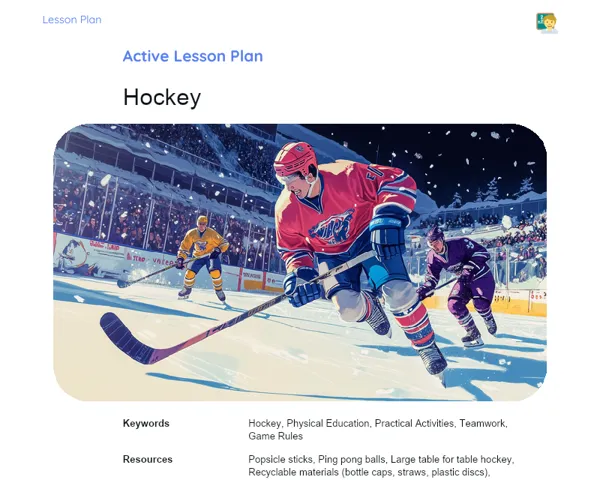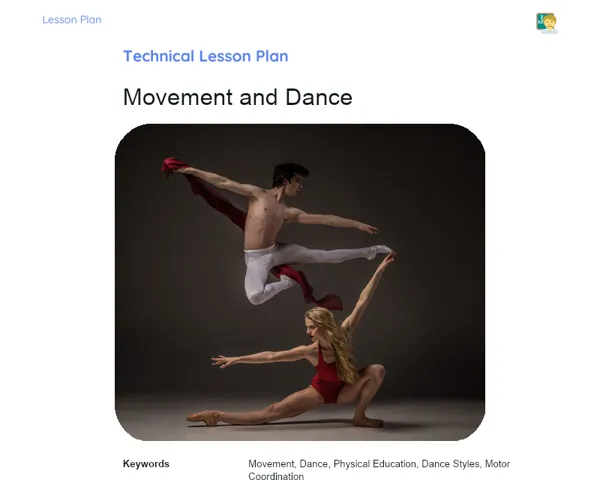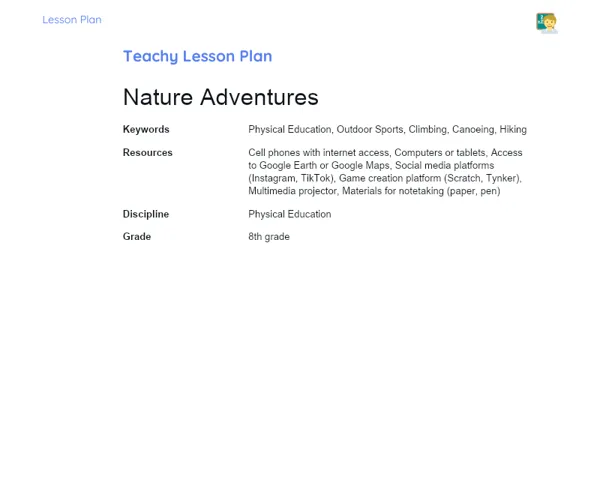Lesson Plan | Socioemotional Learning | Track and Field
| Keywords | Athletics, Physical Education, Grade 11, Sprints, Race Walks, Throws, Jumps, Socio-emotional Skills, Self-awareness, Self-control, Responsible Decision Making, Social Skills, Social Awareness, RULER, Mindfulness, Emotional Regulation, Autonomy, Personal Goals |
| Resources | Open space for athletics activities, Cones for marking stations, Stopwatch, Throwing equipment (shot put, discus, javelin, hammer), Bar for high jump, Poles for pole vaulting, Notebooks for taking notes, Visual aids (posters, charts), Papers and pens for reflective writing, Mats or cushions for mindfulness practice |
| Codes | - |
| Grade | 10th grade |
| Discipline | Physical Education |
Objective
Duration: 10 to 15 minutes
The aim of this portion of the Socio-emotional Lesson Plan is to clearly present the specific objectives of the lesson to the students, ensuring they understand what’s expected of them. By outlining the topic to be learnt and the required skills, students will connect the content to their own experiences and feelings, thus enhancing the development of socio-emotional competencies like self-awareness and self-control. This sets the tone for the lesson, fostering engagement and motivating students right from the start.
Objective Utama
1. Identify and describe the main events in athletics, including sprints, race walks, throws, and jumps.
2. Comprehend the basic rules and the effects of athletics activities on the human body, encouraging reflection on the significance of sports for both physical and mental well-being.
3. Cultivate socio-emotional skills, such as self-awareness and self-control, through engaging in and reflecting on athletics events.
Introduction
Duration: 20 to 25 minutes
Emotional Warmup Activity
Mindfulness Moment
Mindfulness practice is a method designed to enhance attention to the present moment, helping students build focus, presence, and concentration. In this activity, students will be guided through steps that encourage them to connect with their emotions and their surroundings, paving the way for a calmer and more receptive mindset for the Physical Education class.
1. Ask students to find a comfortable seated position, keeping their backs straight and their feet flat on the ground.
2. Instruct them to gently close their eyes and place their hands on their knees, palms facing upwards.
3. Begin by leading them in a series of deep breaths: inhale slowly through the nose, hold it for a few moments, then exhale gently through the mouth.
4. After a few deep breaths, direct their focus to the sensation of breathing, paying attention to how the air flows in and out of their lungs.
5. Encourage them to acknowledge any thoughts or emotions that arise, but to let go of them without clinging on, like clouds passing in the sky.
6. Next, guide them through a body scan, starting from their feet and working up to the head, noticing any areas of tension or discomfort and consciously relaxing those spots.
7. Wrap up the practice by inviting students to slowly open their eyes and redirect their attention back to the classroom, while carrying a sense of calm and focus with them.
Content Contextualization
Athletics, with its variety of events such as sprints, race walks, throws, and jumps, is a discipline that demands both physical prowess and emotional control. Picture an Olympic athlete gearing up for a 100-meter dash. The tension, anticipation, and adrenaline are through the roof, yet they must maintain their focus and self-control to deliver their best performance. Today, we’ll not only dive into the techniques and regulations of athletics, but also consider how our emotions affect our performance and physical health. Understanding and managing our emotions is vital to achieving success and enjoyment in any endeavour we pursue, whether in sports or other facets of life.
Development
Duration: 60 to 75 minutes
Theory Guide
Duration: 20 to 25 minutes
1. Sprints: Sprints are among the most exciting events in athletics, categorized into short (100m, 200m, 400m), middle (800m, 1500m), and long distances (5000m, 10000m). Take the 100m dash as an example, which calls for explosive strength and top speed.
2. Race Walks: Race walking is a technical event where the main rule is that one foot must always touch the ground. This walking technique is crucial to prevent disqualification.
3. Throws: This area includes shot put, discus, javelin, and hammer throw, each with its own specific techniques and guidelines. The shot put is a good example that requires strength and skill to launch the heavy ball as far as possible.
4. Jumps: These events consist of high jump, pole vault, long jump, and triple jump. In high jump, for instance, athletes blend speed, jumping technique, and coordination to clear the bar without knocking it off.
5. Rules and Body Impacts: Every event comes with specific rules athletes must stick to in order to avoid penalties or being disqualified. The body experiences different impacts depending on the event, necessitating varied forms of physical and mental preparation. For example, long-distance running requires cardiovascular endurance, whereas throwing events demand significant muscular strength.
Activity with Socioemotional Feedback
Duration: 40 to 50 minutes
Athletics Circuit with Socio-emotional Reflection
Students will engage in a circuit of activities that replicate the various athletics events. Each station will represent a different event, giving students a chance to practice and contemplate their feelings and performance.
1. Split the class into smaller groups and assign them to the different circuit stations (running, walking, throwing, and jumping).
2. Go over the basic rules and techniques for each event before they start practicing.
3. Each group will have a set time to practice at each station (about 10 minutes per station).
4. During the practice, encourage students to observe their own emotions and those of their peers, noting any feelings or reactions that come up.
5. Once all stations are completed, regroup the students for a circle discussion.
Discussion and Group Feedback
Following the practice, lead a group discussion using the RULER method. Recognize the emotions felt during the activities: invite students to share their feelings at each station (anxiety, excitement, frustration, joy). Understand what caused those emotions: ask what triggered these feelings (difficulty with the technique, success in execution, support from peers). Label the emotions accurately: assist students in identifying and naming their emotions properly. Express emotions in a constructive way: talk about how they showed these emotions during the activity (positively or negatively). Regulate emotions effectively: suggest strategies to manage emotions during sports practice, such as deep breathing, concentrating on technique, and offering mutual support among friends. This reflection will aid students in understanding their emotional responses better and in developing self-awareness and self-control skills.
Conclusion
Duration: 15 to 20 minutes
Reflection and Emotional Regulation
For the reflection and emotional regulation activity, suggest having a group discussion or assigning a writing task. Request students to jot down one or two paragraphs reflecting on the challenges they encountered during the athletics class and how they coped with their feelings. They should consider questions such as: What emotions did they experience during each event? How did those emotions affect their performance? What strategies did they employ to manage their feelings and stay focused? In the discussion, encourage students to share and listen actively, fostering a supportive environment.
Objective: This activity aims to promote self-assessment and emotional regulation. Through reflecting on the challenges encountered and the strategies used for managing their feelings, students will pinpoint effective approaches for handling difficult situations in the future, both in sports and in other life scenarios. This nurtures self-awareness and self-control, which are crucial for socio-emotional growth.
Glimpse into the Future
At the end of the session, teachers can help students in setting personal and academic goals related to the lesson content. Encourage students to think about specific objectives they want to achieve concerning the athletics events they practiced. They can write these goals down and share some of them with the class if they feel comfortable. Emphasize the importance of setting clear and attainable goals, and how this can assist in their ongoing development of both physical and emotional skills.
Penetapan Objective:
1. Enhance technique in a particular athletics event.
2. Boost physical endurance for long-distance running.
3. Improve self-control during high-pressure scenarios.
4. Foster teamwork and support skills among peers.
5. Establish a regular training routine outside of Physical Education classes. Objective: The aim of this section is to strengthen students' sense of autonomy and the practical application of their learning. By setting personal and academic goals, students are encouraged to continue developing their physical and emotional skills, fostering a sense of responsibility and commitment to their own growth. This also helps create a forward-thinking perspective where learning in Physical Education translates into ongoing and tangible advancements in their lives.



